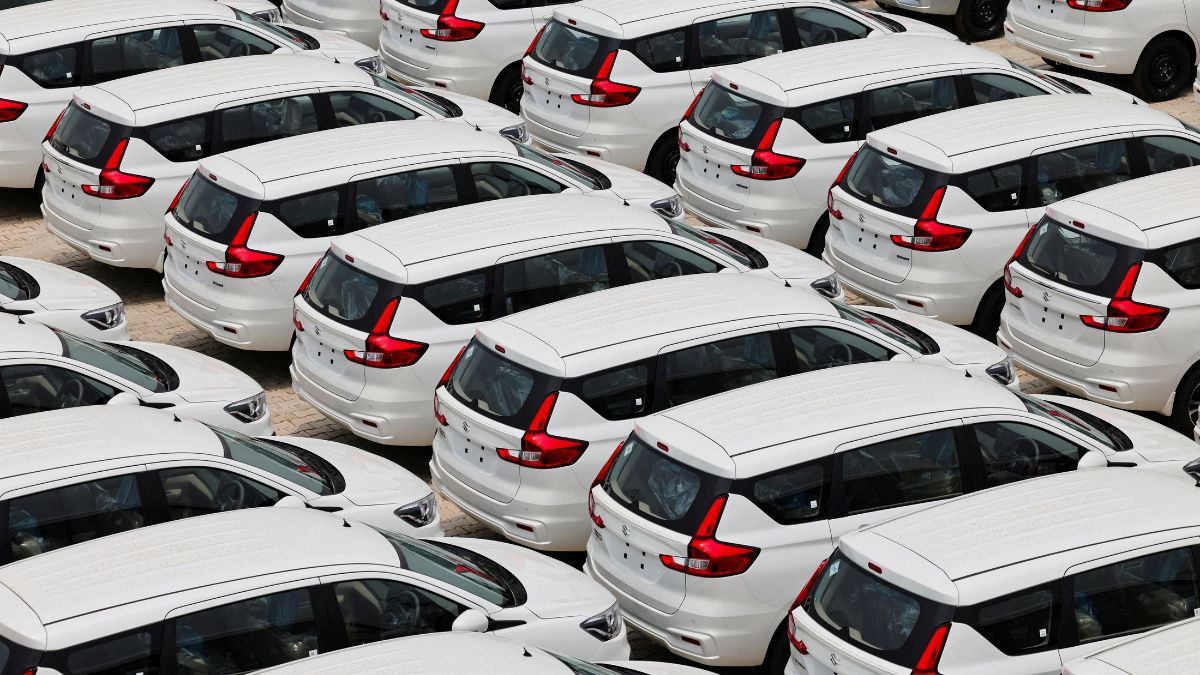EXPLAINER | Why a softening economy, coupled with rare-earth materials stand-off, can lead to supply constraints
 [File] Maruti Suzuki Ertiga cars are parked at the Manesar, plant in Haryana, India on June 17 2025 | REUTERS
[File] Maruti Suzuki Ertiga cars are parked at the Manesar, plant in Haryana, India on June 17 2025 | REUTERS
Things are getting better. Things are getting worse. And the devil is all in the details.
India’s automobile sales last month showed a trajectory that seemed reassuring, but then, it is the intricate percentages, ratios and segmentations that tell the real story. Auto sales in the country are always a benchmark not just for the sector, but as a bellwether for the overall economy, and hence have added significance.
First, the good news. Overall sales increased nearly 5 per cent, year-on-year, with segment-wise growth in all the categories, ranging from an 8.68 per cent growth in tractor sales to a decent enough 2.45 per cent for passenger vehicles (including cars, vans and SUVs). That means the numbers increased in June 2025 compared to June 2024, when both rural and urban consumption were on the decline, and there was concern about global inflation and a slowdown.
While global concerns, particularly geopolitical realities, have only gotten worse, the recession fears that abounded in 2023 and 2024 internationally, and the real fear of inflation unchecked within the country, seem to have abated. And that shows in the year-on-year figures improving.
But come to the month-on-month figures, that is the sales in June 2025 compared to the previous month, May, and the story almost completely flips upside down. Two-wheeler sales fell a sizable 12.48 per cent, while commercial vehicles (CV) fell nearly 3 per cent.
Both aren’t good news for the economy—two-wheeler sales are a proxy for the health of the rural economy, and for them to fall in June, the month after harvest and before monsoon and the wedding season, isn’t particularly heartening, especially considering that the government has been hardworking to show that rural sentiments, which had crashed after Covid, was on the up and up.
MORE | Bajaj, Hero, TVS, Honda, Royal Enfield: How many vehicles did each two-wheeler brand sell in June?
And commercial vehicles, similarly, are an indicator of the robustness of economic activity. While their drop in June could be blamed on monsoon, when business and farming activity slows down, constrained liquidity (meaning lack of cash amongst prospective buyers) is worrying indeed. According to the Federation of Automobile Dealers Association (FADA), which released these sales figures on Monday morning, the drop could also be due to the impact of CV taxation, including the new rules that stipulate that trucks and cargo vehicles should have air-conditioned driver cabins. Even as he also blamed it on muted infrastructure demand, FADA president C.S.Vigneshwar also admitted, “Overall, June reflected a resilient CV segment adeptly navigating cost pressures and a softening economy.”
That last bit, coupled with whatever Trump is going to unleash (the deadline for a trade deal with the US expires on Wednesday morning), the global geopolitical scenario really sparks worrisome questions as to what the real state of the Indian economy is. The above-normal monsoon could lift the spirits of the rural economy, but all the other factors, as well as challenges in securing rare-earth materials that have stalled component production, could further constrain supply and retail volumes.
Business